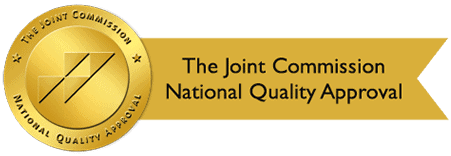By: Design for Change Recovery
Categories:
Hidden Menace: Designer Opioids Are Quietly Fueling a New Crisis
You are here:In recent years, the opioid epidemic has evolved—and so has the threat. The U.S. is increasingly besieged not just by fentanyl but by a new generation of synthetic opioids that are exponentially more potent and far more dangerous.
What Are Designer Opioids, and Why Are They So Dangerous?
Two emerging opioids raising alarm:
-
Nitazenes: Potent synthetic opioids legally undocumented and produced illicitly. These have surged in illicit markets and have already caused thousands of deaths globally.Commonwealth Fund+4The Sun+4Wikipedia+4Wikipedia+1
-
7‑Hydroxymitragynine (7‑OH): A powerful opioid derivative found in kratom products. In 2024, poison control centers reported over 1,600 exposures, many involving abuse.Wikipedia
-
In 2025, the FDA recommended classifying 7‑OH as a controlled substance, with Florida already moving it to Schedule I.Wikipedia+2DEA+2
These substances are easy to mask—mixed into pills, vaping cartridges, or supplements—creating a stealth crisis for users unaware of the risk.
The Growing Threat: What We Know
Xylazine—The ‘Zombie Drug’
Often mixed with fentanyl:
-
As early as 2022, 80% of fentanyl paraphernalia in Maryland contained xylazine, branded “tranq.”American Psychiatric Association+3Wikipedia+3Wikipedia+3
-
The White House now classifies xylazine-laced fentanyl as the most deadly drug threat facing the U.S.The Times of India+15Wikipedia+15The Sun+15
Nitazenes—Stronger Than Fentanyl
-
In the UK, there were nearly 300 nitazene-related deaths from mid‑2023 to mid‑2024.The Sun+2Commonwealth Fund+2
-
U.S. deaths tied to synthetic opioids, including nitazenes and fentanyl, reached 75,000 per year.The Sun+2Commonwealth Fund+2
7-Hydroxymitragynine (7-OH)
-
Cases rose from under 200 in 2014 to around 1,600 by 2024, with 40% involving abuse.Wikipedia
-
The FDA is moving to regulate it—and Florida has already banned it under emergency rule.Wikipedia
These emerging opioids are faster-acting, more lethal, and far less controlled—sometimes driving addiction and overdose before users even suspect its presence.
Why This Matters for Treatment Centers Like Design for Change
Awareness and Education
Clients must be educated about these clandestine threats—especially since substances like 7-OH are often marketed as “natural” or “herbal.” Providing accurate, up-to-date information is critical to prevention and early intervention.
Evolving Detox Protocols
These designer opioids may require tailored detox approaches. Xylazine, for instance, poses a unique withdrawal profile. Treatment centers need to adapt medically, not just psychologically, as new substances emerge.
Advocacy and Policy
Design for Change’s voice and participation in local and state-level discussions—especially regarding substance monitoring and regulation—can play a critical role in shaping safer futures.
Recovery Amid Rising Danger: A Roadmap for Resilience
1. Comprehensive Screening & Education
Every intake should include screening for possible designer opioid use—especially for patients reporting use of kratom or adulterated substances. Educational sessions on emerging drugs must become standard.
2. Advanced Detox Strategies
Our medical team must stay informed on the latest detox protocols for synthetic opioids, adapting care plans to address:
-
Potency and altered withdrawal timelines
-
Unique symptoms (like xylazine’s tissue damage or oversedation risks)
3. Dual-Diagnosis & Continuous Support
Designer opioids exacerbate mental health challenges. Integrated treatment—addressing trauma, anxiety, depression, and addiction—is more vital than ever. Aftercare programs that connect clients to sober living, peer support, and community resources provide the scaffolding for long-term success.
4. Community Outreach & Advocacy
Partnering with local health departments, pharmacies, and law enforcement to:
-
Spread awareness
-
Promote safe pill checks
-
Advocate for stronger regulation of analog drugs
Design for Change can serve as a community leader in harm reduction.
Real World: Numbers That Spark Action
-
Over 1 million Americans have died from drug overdoses since 1999.
-
Fatality statistics continue to climb, though the recent 24% drop in overdose deaths in 2024 offers a glimmer of hope.
Still, the rise of nitazenes and 7-OH threatens to derail progress. Our window for effective intervention is narrow.
Wrapping Up: Hope in the Midst of Crisis
Designer opioids like nitazenes and 7-OH represent a new frontier in addiction—one that is stealthy, lethal, and rapidly spreading. But emerging threats do not spell inevitability:
-
Awareness is power: Educate clients and stakeholders now.
-
Adapt is essential: Update treatment protocols swiftly.
-
Recover is possible: With tailored, compassionate care and community support, lives can be rebuilt.
Design for Change stands at the forefront—with a commitment to innovative, holistic, and evidence-based recovery.


